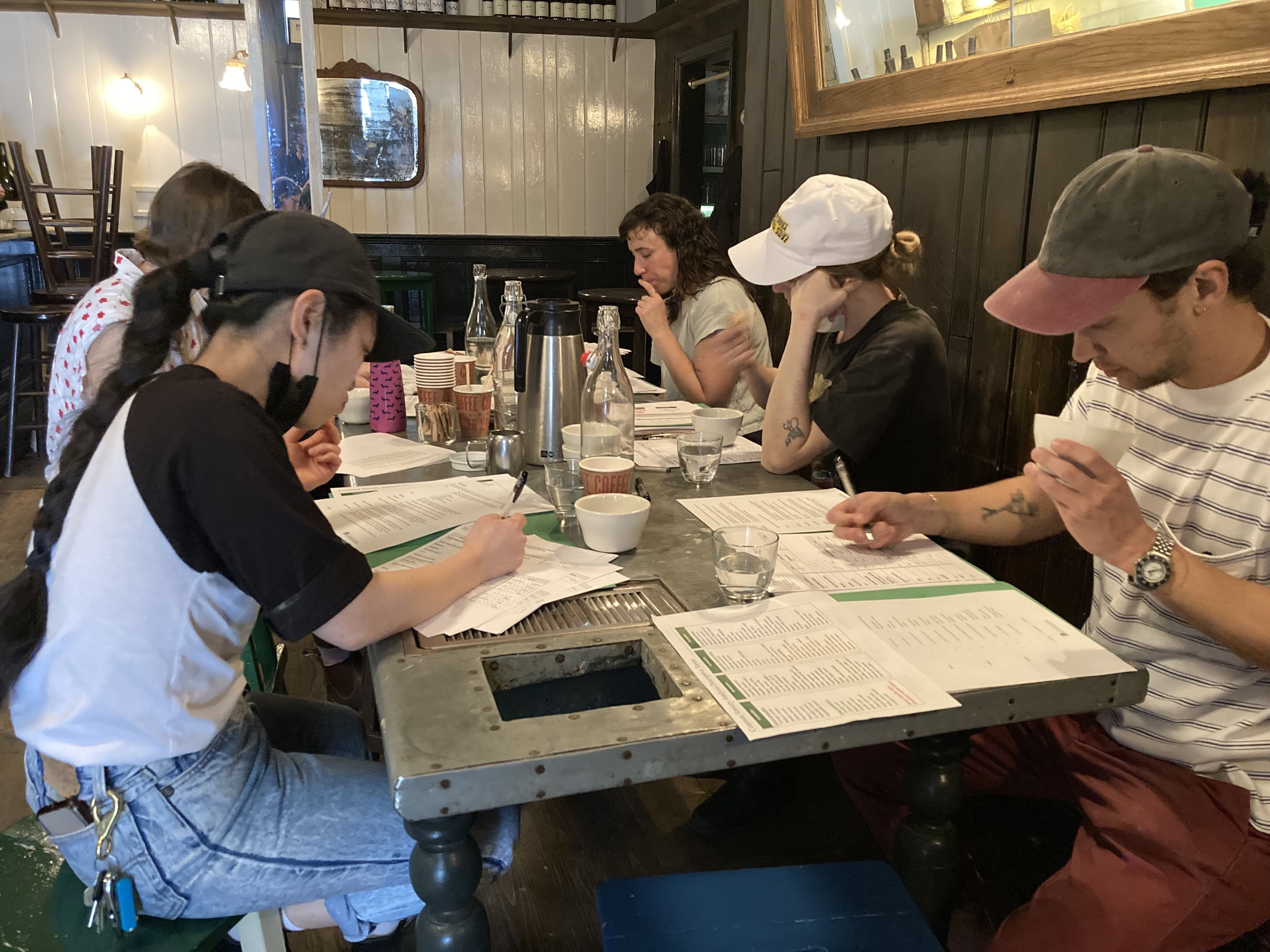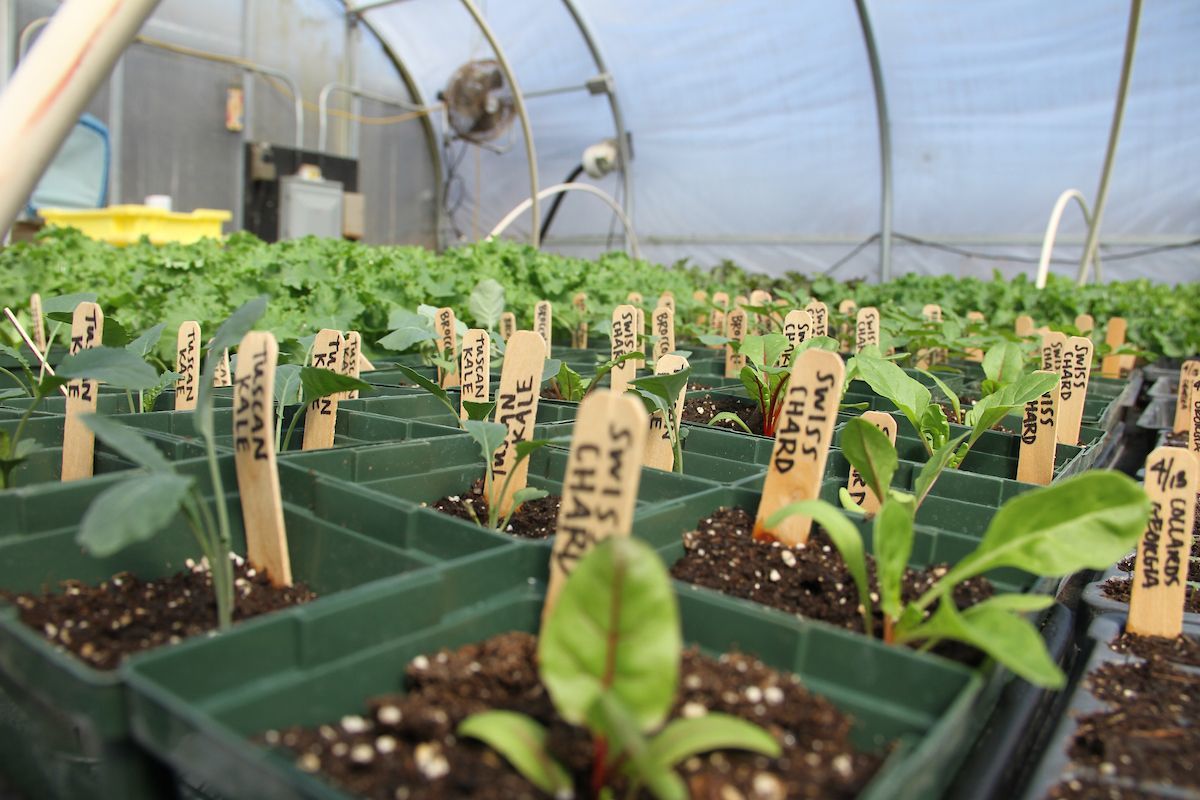
The answer to this question is a long one, so grab a slice of toast and bear with me.
Perhaps the single most important factor in baking a satisfying loaf of bread is the quality of the flour used: not only the way in which the flour is ground, but also the nutrient and protein content of the wheat itself.
This is somewhat problematic for bakers (and eaters) in our part of the country who are trying to make delicious breads using local flour. The American wheat industry is dominated by growers in Kansas and elsewhere in the Great Plains, meaning that the majority of research and development is centered on wheats that perform well under large scale commercial production and in climates very different from ours. While farmers in northern climates manage to grow these varieties, the yield and quality are comparatively low, forcing bakers to supplement with higher quality wheat from elsewhere.
To address this issue, several universities and grains-related organizations–now including Glynwood–have been collaborating for over a decade to grow and study different varieties of organic wheat and compare their agricultural and culinary potential in the northeast and upper midwest. These organizations have specifically been experimenting with hard winter wheat, which is wheat planted in the fall, left to overwinter, and harvested in the summer. Most bakers use a combination of winter and spring wheats in their bread flour: hard spring wheat, which is seeded in spring and harvested in the fall, has higher protein value and stronger gluten than its winter counterpart. But as Julie Dawson, project lead from the University of Wisconsin, outlines in the project, spring wheat is more expensive than winter wheat, is harder to grow in northern climates, and doesn’t provide the same erosion control that winter wheat does in the colder months. Therefore, from economic, environmental and agricultural angles, it is most advantageous to find and develop high-quality winter wheat varieties that farmers in the northeast and midwest can successfully grow and regional bakers can use to make delicious, locally sourced bread.
The first step in this broad study was to grow out different winter wheat varieties and contrast their respective performances from agricultural standpoints. How resistant are they to pests and diseases? How long do they take to mature? How uniform is the crop from one year to the next, and how well does the grain store? After several seasons of trial plantings in New York, Vermont, and Wisconsin, the wheat varieties that performed best advanced to the next steps of experimentation: baking trials and sensory analysis, which were conducted in spring of 2022.
For the baking trials, 12 professional bakers from each region (the upper midwest, Vermont, and New York) were each sent six bags of flour labeled with codes rather than variety names to eliminate bias. Within the pool of samples were four varieties of winter wheat that are not yet on the commercial baking market, and one commercial variety represented twice as a control sample. Prior to the bake test, bakers collectively established precise methods and protocols to follow, outlining everything from the amount of water to add to the acceptable room temperature for fermentation. Bakers made two loaves of bread from each sample flour, keeping track of how easy it was to work with throughout the mixing, fermentation, shaping and baking processes. Once the bread came out of the oven, bakers took photos, cutting into one loaf of each sample to observe the structure of the crumb (looking for things such as the size and variability of air bubbles) as well as the thickness and color of the crust.
After visual and tactical analysis of each loaf came a sensory panel. In order to collect meaningful data, two weeks before the bake trials sensory expert Roy Desrochers from the University of Vermont trained participating tasters in what is called “descriptive sensory analysis.”
The New York training took place at Hartwick College in Oneonta, with tasters from Mel the Bakery (NYC), GrowNYC, Glynwood, Wide Awake Bakery (Ithaca), and Bread Alone (Woodstock). Roy began by calibrating our palates using a seven-point scale for the primary senses of salty, sweet, sour, and bitter. Next, we learned how to qualify different aromatics and attributes (for example, “syrupy sweet” versus “fruity sweet”) and discussed mouth feels such as astringency and coating on the roof of your mouth. Roy finished the training in a guided tasting of store-bought breads so that we could practice comparing samples and filling out a sensory scorecard. After hours of identifying aromas using “bunny sniffs” and nibbling on countless cubes of bread, we left the training with full bellies, lots of lingering questions for Roy, and excitement for the baking trial ahead.
The official sensory trials took place in April. Director of Regional Food Programs June Russell and I spent the day in New York City with our friends from Mel the Bakery, tasting samples from Mel and another bakery called She Wolf. For six hours, we compared and contrasted six bread samples from each bakery, chewing and scoring in silence before opening up for group discussion. June submitted our compiled scorecards to the project leads, who are still analyzing agricultural, baking, and sensory trial data from across the three participating states to look for statistically significant results. Future discussions will allow us to collectively decide as stakeholders which wheat varieties, if any, are the most promising to grow and bake with in our regions.
Projects such as this one are critical in identifying wheat that small-scale, sustainable farmers in northern climates can successfully add to their farming systems, regional bakers can enjoy baking with, and consumers will love eating. We are excited to see how this work benefits our regional grain sheds; I, for one, look forward to eating more bread samples in the seasons to come.
This work is funded by USDA-OREI (Organic Research and Extension Initiative) Value Added Grains for Local and Regional Food Systems 2020-51300-32379
For more information visit the eOrganic project website.

